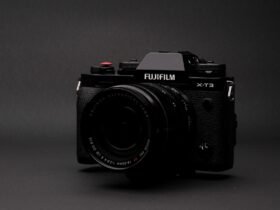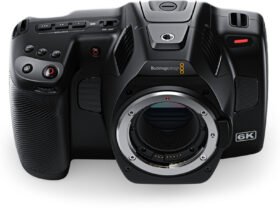Drawing from my own hands-on experience with various cameras, I can attest that the Sony ZV-E10 has created quite a buzz among content creators and vloggers, largely due to its outstanding capabilities. Yet, I’ve learned that no single camera is a one-size-fits-all solution, as every creator’s needs and preferences can vary. From my time spent exploring and testing various models, I’ve come across several cameras that can go toe-to-toe with the Sony ZV-E10, or even surpass it in certain aspects. In this article, we will explore the top 5 Sony ZV-E10 alternatives that are worth considering for anyone looking for a high-quality camera that can deliver excellent results for their content creation needs.
1. Sony a6400
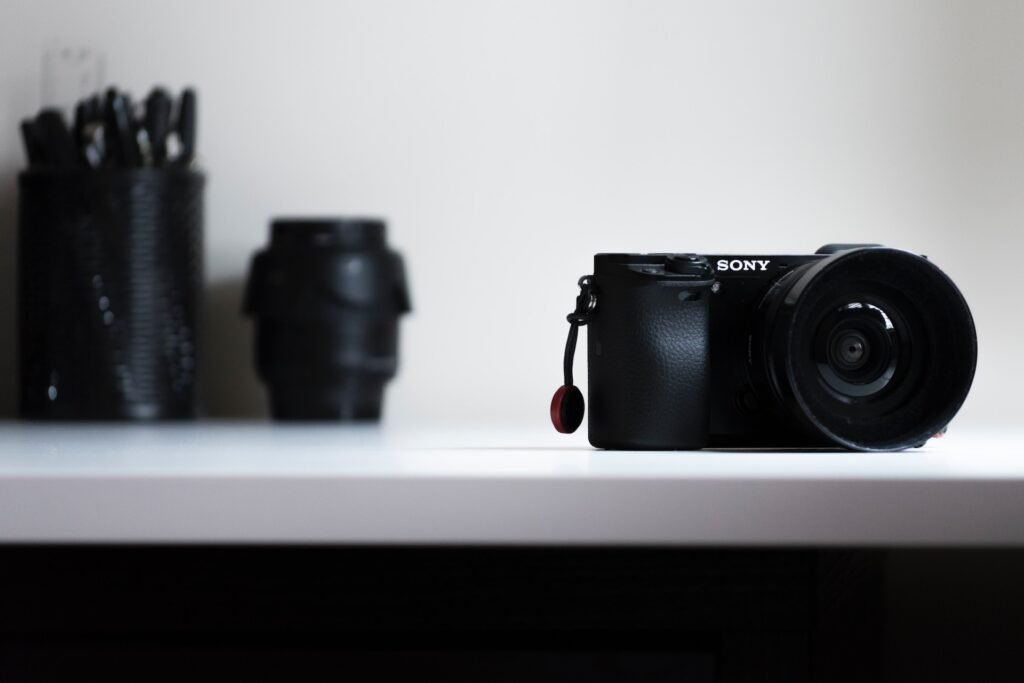
Drawing from my time behind the lens, I’ve had the privilege of using both the Sony ZV-E10 and the a6400 extensively. Let me break down the differences, from one enthusiast to another.
The Sony ZV-E10 and a6400 are mirrorless cameras that come with a variety of features, including high-quality sensors, fast autofocus, and excellent video capabilities. While both cameras have some similarities, they also have distinct differences. We will compare the two cameras and show why the a6400 is a great alternative to the ZV-E10.
Sensor- Full frame or APS-C
Both cameras feature the same 24.2-megapixel APS-C sensors. The APS-C sensors in these cameras are designed to capture high-quality images with a broad dynamic range, allowing for detailed and sharp images.
Autofocus
The a6400 and ZV-E10 feature Sony’s excellent autofocus technology. They come with a 425-point phase-detection autofocus system that covers almost the entire sensor area. Additionally, both cameras come with real-time tracking autofocus, making it easier to capture moving subjects accurately.
Speed
The a6400 is faster than the ZV-E10 when it comes to burst shooting. The a6400 can capture up to 11 frames per second compared to the ZV-E10’s 10 frames per second. The a6400 also has a larger buffer, allowing you to shoot more shots before the camera slows down.
Design
The a6400 and ZV-E10 have similar designs, with both cameras featuring a compact and lightweight body. The ZV-E10 weighs 343g, and the a6400 weighs 403g. The a6400 is slightly larger than the ZV-E10, measuring 120 x 66.9 x 59.7 mm compared to the ZV-E10, which measures 115.2 x 64.2 x 44.8 mm.
Viewfinder and LCD monitor
The a6400 comes with an electronic viewfinder (EVF) and a 3-inch tilting touchscreen LCD. The EVF is bright and clear, with 2.36 million dots, making it easier to compose images even in bright sunlight. On the other hand, the ZV-E10’s 3-inch articulating touchscreen felt right at home when I vlogged.
Battery life
Both cameras use the same NP-FW50 battery, and they offer similar battery life. The ZV-E10 is rated to capture approximately 440 shots per charge, while the a6400 can capture up to 360 shots per charge.
Video Capabilities
Both cameras offer excellent video capabilities. The a6400 can capture 4K video at up to 30fps and 1080p video at up to 120fps. The ZV-E10 can capture 4K video at up to 30fps and 1080p video at up to 120fps. However, the ZV-E10 is more geared towards vlogging, with a variety of features like product showcase, background defocus, and facial priority AE.
Lens Mount and Availability
Both cameras use the Sony E-mount lens system, which offers a wide range of lenses for different photography and videography needs. The E-mount system also allows you to use third-party lenses, making it easier to find a lens that fits your needs and budget.
Price
The Sony a6400 is slightly more expensive than the ZV-E10, with the a6400 retailing at around $900, while the ZV-E10 is priced at around $800. Having wielded both cameras, I believe the a6400 offers a few advantages, but the choice always boils down to personal preferences and priorities.
2. Nikon Z30
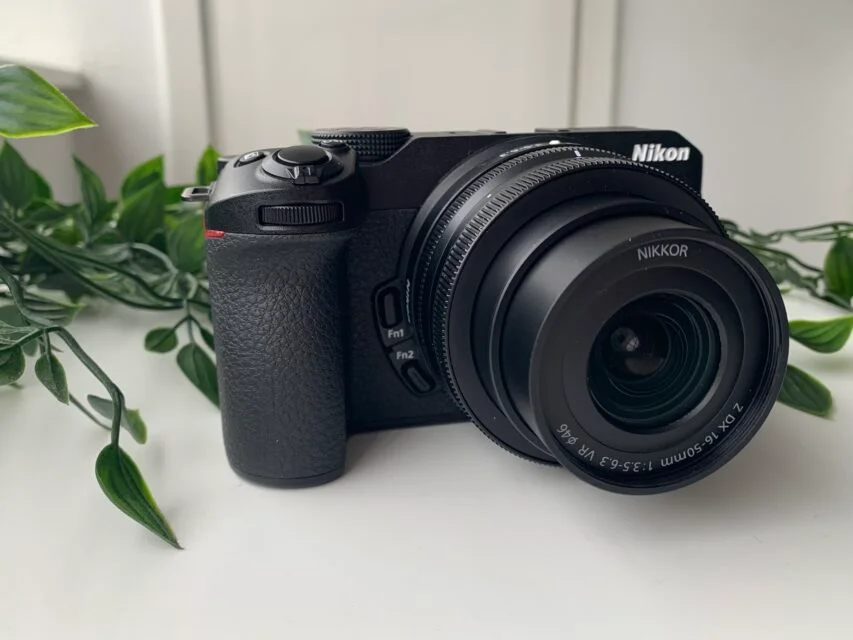
The Sony ZV-E10 and Nikon Z30 are two great mirrorless cameras that offer excellent features and functionality for the price. In this section, we will compare the two cameras in detail and highlight the key differences that make the Nikon Z30 a good alternative to the Sony ZV-E10.
Having delved deep into their specs, handling, and results, let me provide you an insider’s take on these two remarkable mirrorless cameras.
Sensor
A photographer’s delight, both pack APS-C sensors, but with nuanced differences. Sony’s ZV-E10 boasts a 24.2-megapixel sensor, giving it a slight edge over the Z30’s 20.8-megapixel. Yet, I was pleasantly surprised by the Z30’s broader ISO spectrum, reaching 51,200 compared to Sony’s 32,000, which aids in those challenging low-light captures.
Autofocus
Both cameras offer fast and reliable autofocus, with the Sony ZV-E10 having 425 phase-detection autofocus points and the Nikon Z30 having 209 phase-detection autofocus points. However, the Nikon Z30 has a wider autofocus sensitivity range of -4.5 to +19 EV compared to Sony’s -3 to +20 EV, making it better at focusing in low-light conditions. Additionally, the Nikon Z30 has eye-detection autofocus for both humans and animals, which can be a great feature for portrait and wildlife photographers.
Speed
Both cameras offer high-speed continuous shooting, with the Sony ZV-E10 capable of shooting up to 11 fps and the Nikon Z30 capable of shooting up to 11 fps as well. However, the Nikon Z30 has a larger buffer, allowing you to shoot up to 100 frames at full resolution compared to Sony’s 116 frames at a slightly lower resolution.
Design
The Sony ZV-E10 has a slightly smaller form factor compared to the Nikon Z30, with dimensions of 4.5 x 2.5 x 1.8 inches and a weight of 12.1 oz. The Nikon Z30, on the other hand, has dimensions of 5 x 2.9 x 2.3 inches and weighs 12.3 oz. Both cameras have articulating touchscreen LCD monitors, making it easier to capture photos and videos at different angles. The Nikon Z30 has a better grip and feels more comfortable in the hand, which can be an advantage for longer shooting sessions.
Viewfinder and LCD monitor
The Sony ZV-E10 has an electronic viewfinder with a resolution of 2.36 million dots, while the Nikon Z30 has an electronic viewfinder with a resolution of 2.36 million dots as well. Both cameras also have articulating touchscreen LCD monitors, with the Nikon Z30 having a slightly higher resolution of 1.04 million dots compared to Sony’s 921,600 dots.
Battery life
The Nikon Z30 has a battery life of approximately 300 shots per charge, which is not as good as the Sony ZV-E10’s 440 shots per charge. However, the Z30’s battery is the same as the one used in many other Nikon cameras, so users who own other Nikon cameras may appreciate the ability to share batteries between their devices. Additionally, the Z30’s battery can be charged via USB-C, making it easy to recharge the battery on-the-go.
Video Capabilities
The Sony ZV-E10 and Nikon Z30 both offer 4K video recording, but the Sony ZV-E10 has a slight edge in video capabilities. The ZV-E10 can record 4K video at up to 100 Mbps, while the Z30’s maximum bitrate is 60 Mbps. The ZV-E10 also has the ability to output 10-bit 4:2:2 footage over HDMI, which is a feature that is not available on the Z30.
My filmmaker friends would agree: the ZV-E10 slightly pulls ahead in video features. With a capacity to record 4K at 100 Mbps and its 10-bit 4:2:2 HDMI output, it’s more versatile than the Z30’s offerings.
Lens Mount and Availability
The Sony ZV-E10 uses the Sony E-mount, which has a wide range of compatible lenses available from Sony and third-party manufacturers. The Nikon Z30, on the other hand, uses the Nikon Z-mount, which is relatively new and has a smaller selection of lenses available. However, Nikon has been rapidly expanding its Z-mount lens lineup, and there are already several high-quality lenses available for the system.
Price
Both the Sony ZV-E10 and Nikon Z30 are priced similarly at around $800.
3. Canon EOS M50 Mark II

Sony ZV-E10 and Canon EOS M50 Mark II are two highly regarded mirrorless cameras that offer excellent features and functionality at affordable prices. Both cameras are designed to cater to the needs of vloggers, content creators, and amateur photographers, making them highly versatile and popular among beginners.
In this article, we will compare and contrast the Sony ZV-E10 and Canon EOS M50 Mark II, focusing on their features, specifications, and capabilities. We will also highlight the strengths and weaknesses of each camera to help you make an informed decision when selecting the one that suits your needs the best. Sharing my insights, I hope to shed light on what each brings to the table.
Sensor: Full frame or APS-C
The Sony ZV-E10 has a 23.5 x 15.6 mm (APS-C) CMOS sensor with an effective resolution of 24.2 megapixels. The Canon EOS M50 Mark II has a slightly larger 22.3 x 14.9 mm (APS-C) CMOS sensor with an effective resolution of 24.1 megapixels. While both cameras have APS-C sensors, the Canon EOS M50 Mark II’s sensor is marginally smaller, which can result in a slightly narrower field of view.
However, the difference in sensor size is not significant and is unlikely to affect the image quality significantly. Both cameras offer high-quality images, and the choice of sensor size comes down to personal preference.
Autofocus
Both the Sony ZV-E10 and Canon EOS M50 Mark II have excellent autofocus capabilities, making them ideal for capturing fast-moving subjects. The Sony ZV-E10 has 425 phase-detection autofocus (AF) points and 425 contrast-detection AF points. The Canon EOS M50 Mark II, on the other hand, has 143 contrast-detection AF points and 99 phase-detection AF points.
While the Sony ZV-E10 has more AF points, the Canon EOS M50 Mark II has a better AF system that delivers more reliable and accurate results, especially in low-light conditions. The Canon EOS M50 Mark II also offers Eye AF, which ensures that the subject’s eyes are always in focus, making it ideal for portrait photography.
Speed
Both the Sony ZV-E10 and Canon EOS M50 Mark II offer excellent speed, making them ideal for capturing fast-moving subjects. The Sony ZV-E10 can shoot at up to 11 frames per second (fps) for up to 116 frames (JPEG) or 46 frames (RAW). The Canon EOS M50 Mark II, on the other hand, can shoot at up to 10 fps for up to 10 frames (RAW) or 33 frames (JPEG).
While the Sony ZV-E10 has a slightly faster burst mode, the Canon EOS M50 Mark II has a better buffer capacity, allowing it to capture more images in a single burst. Additionally, the Canon EOS M50 Mark II has a shorter start-up time, making it quicker to get ready for shooting.
Design: Dimension and Weight Comparison
The Sony ZV-E10 and Canon EOS M50 Mark II have similar designs and form factors, making them compact, lightweight, and highly portable. The Sony ZV-E10 measures 115.2 x 64.2 x 44.8 mm and weighs 343 grams (with battery and recording media). The Canon EOS M50 Mark II measures 116.3 x 88.1 x 58.7 mm and weighs 387 grams (with battery and recording media).
While the Sony ZV-E10 is slightly smaller and lighter, the difference in size and weight is negligible. Handling both, I found minimal difference in weight and size. But, ergonomically speaking, the grip and button layout can be a personal preference.
Viewfinder and LCD monitor
The Sony ZV-E10 has a 3.0″ articulating touchscreen LCD monitor with a resolution of 921,600 dots, while the Canon EOS M50 Mark II features a 3.0″ articulating touchscreen LCD monitor with a resolution of 1,040,000 dots. Both cameras have an electronic viewfinder (EVF), but the Canon EOS M50 Mark II’s is built-in, while the Sony ZV-E10 doesn’t have one. Instead, the Sony ZV-E10 uses the LCD monitor as a viewfinder, which may not be as convenient for some users. The Canon EOS M50 Mark II’s EVF has a resolution of 2,360,000 dots and provides 100% coverage, making it ideal for shooting in bright sunlight.
Battery life
The Canon EOS M50 Mark II has a battery life of approximately 305 shots per charge, while the Sony ZV-E10 can take up to 440 shots per charge. Both cameras have USB charging capabilities, so you can easily recharge the batteries while on the go. However, it’s worth noting that the battery life of both cameras may vary depending on how you use them, such as the number of images you take, video recording, and using Wi-Fi or Bluetooth connectivity.
Video Capabilities
Both cameras offer excellent video capabilities. The Sony ZV-E10 can record 4K UHD video at up to 30 fps and Full HD video at up to 120 fps. It also supports 4:2:2 8-bit video output via HDMI. The Canon EOS M50 Mark II can record 4K UHD video at up to 24 fps and Full HD video at up to 60 fps. It also has a 4K time-lapse movie mode and supports vertical video recording, which is ideal for social media content creators. Both cameras have built-in stereo microphones, and you can connect an external microphone to enhance the audio quality.
Lens Mount and Availability
Being invested in the Sony ecosystem, I loved the vast E-mount lens range. But for Canon aficionados, the M50 Mark II’s EF-M mount, though limited, offers solid lens choices without breaking the bank.
The Sony ZV-E10 has a Sony E-mount, which provides access to a wide range of lenses from Sony and third-party manufacturers. However, if you want to use Canon lenses, you’ll need to purchase an adapter, which can add to the cost and complexity of the system. The Canon EOS M50 Mark II, on the other hand, has a Canon EF-M mount, which is compatible with Canon’s EF-M lenses. While the lens selection is not as extensive as the Canon EF or Sony E-mounts, Canon offers a range of affordable and high-quality lenses that are perfect for this camera.
Price
The Sony ZV-E10 is priced at around $800, while the Canon EOS M50 Mark II is priced at around $700. While the Sony ZV-E10 is more expensive, it offers some features that may appeal to some users, such as the 4:2:2 8-bit video output via HDMI and the larger number of autofocus points. However, the Canon EOS M50 Mark II has some advantages, such as a built-in EVF, a larger and higher-resolution LCD monitor, and better battery life. Additionally, the Canon EOS M50 Mark II is slightly cheaper, which makes it a more affordable option for users on a budget.
4. Panasonic Lumix G95

Having dabbled in vlogging and content creation for years, I’ve had my fair share of experimenting with different cameras.
As a vlogger, finding the right camera can be a daunting task. Sony ZV-E10 and Panasonic Lumix G95 are both excellent mirrorless cameras that offer high-quality video and stills, making them great options for content creators. While the Sony ZV-E10 comes with a bigger APS-C sensor, the Panasonic Lumix G95 offers many features and capabilities that make it a great alternative to the Sony ZV-E10. In this section, we’ll delve deeper into the Panasonic Lumix G95 and highlight its specifications and features that make it a good alternative to the Sony ZV-E10.
Sensor
Full frame or APSC The Sony ZV-E10 has an APS-C sensor, while the Panasonic Lumix G95 comes with a smaller Four Thirds sensor. However, the Lumix G95 has a higher resolution, 20.3 megapixels, compared to the Sony ZV-E10’s 24.2 megapixels. Both cameras have a crop factor, but the Lumix G95 has a 2x crop factor compared to the Sony ZV-E10’s 1.5x crop factor.
Autofocus
Both cameras have excellent autofocus capabilities. The Sony ZV-E10 uses a hybrid autofocus system with 425 phase-detection autofocus points and 425 contrast-detection autofocus points. On the other hand, the Lumix G95 features a contrast-detection autofocus system with 49 autofocus points. While the Sony ZV-E10 has a more advanced autofocus system, the Lumix G95’s autofocus is still fast and reliable, making it a good alternative for vloggers.
Speed
The Lumix G95 has a faster burst mode, with up to 9 frames per second compared to the Sony ZV-E10’s 11 frames per second. However, the Sony ZV-E10 has a faster shutter speed of up to 1/4000 seconds compared to the Lumix G95’s 1/16000 seconds.
Design
Dimension and Weight Comparison The Lumix G95 is slightly bigger and heavier than the Sony ZV-E10. It measures 5.1 x 3.7 x 3 inches and weighs 1.06 lbs, while the Sony ZV-E10 measures 4.5 x 2.5 x 1.8 inches and weighs 0.75 lbs. The Lumix G95 has a more robust and rugged build, with a magnesium alloy body, making it more durable than the Sony ZV-E10.
Viewfinder and LCD monitor
The Lumix G95 comes with a built-in electronic viewfinder (EVF) with a 2.36 million-dot resolution, while the Sony ZV-E10 does not have a built-in viewfinder. However, the Sony ZV-E10 has a 3-inch articulating touchscreen with 921,600 dots resolution, while the Lumix G95’s touchscreen has a higher resolution of 1.24 million dots. Both cameras have an articulating screen, which is beneficial for vloggers who need to shoot from different angles.
Battery life
Shooting on the Lumix G95, I managed about 290 shots per charge, slightly less than the 440 on the Sony. The Lumix G95 also has a Power over Ethernet (PoE) feature that allows it to be powered using a USB connection.
Video Capabilities
When it comes to video capabilities, both cameras offer high-quality video recording, but there are some differences worth noting. The Sony ZV-E10 can record 4K UHD video at up to 30 frames per second and 1080p Full HD video at up to 120 frames per second. It also offers several gamma curve options, including HDR-HLG, Sony S-Log 2, and Sony S-Log 3, which allow for greater dynamic range and flexibility in post-production. The ZV-E10 also features a microphone input and a headphone output, making it suitable for professional video production.
On the other hand, the Panasonic Lumix G95 can record 4K UHD video at up to 30 frames per second and 1080p Full HD video at up to 60 frames per second. It also offers several picture profiles, including Cinelike D and Cinelike V, which offer a more cinematic look to the footage. The G95 also features a microphone input, headphone output, and a 3.5mm jack for external recording devices, making it a good option for professional videographers who require more flexibility.
Lens Mount and Availability
The Sony ZV-E10 comes with a Sony E mount, which is compatible with a wide range of Sony lenses. However, Sony’s E-mount lens range is relatively limited compared to other mirrorless camera systems like Micro Four Thirds and Fujifilm X-mount.
The Panasonic Lumix G95 comes with a Micro Four Thirds mount, which has a vast range of compatible lenses from various manufacturers. This gives users a greater selection of lenses to choose from, including Panasonic’s Lumix G and Leica DG lenses, Olympus’s M.Zuiko lenses, and third-party lenses from companies like Sigma, Tamron, and Voigtlander.
Price
Finally, price is always an essential consideration for any camera purchase. The Sony ZV-E10 has a suggested retail price of around $800, while the Panasonic Lumix G95 is priced at around $700. However, prices may vary depending on the region and retailer, and the cost of lenses should also be considered when comparing overall costs.
5. Olympus OM-D E-M5 Mark III
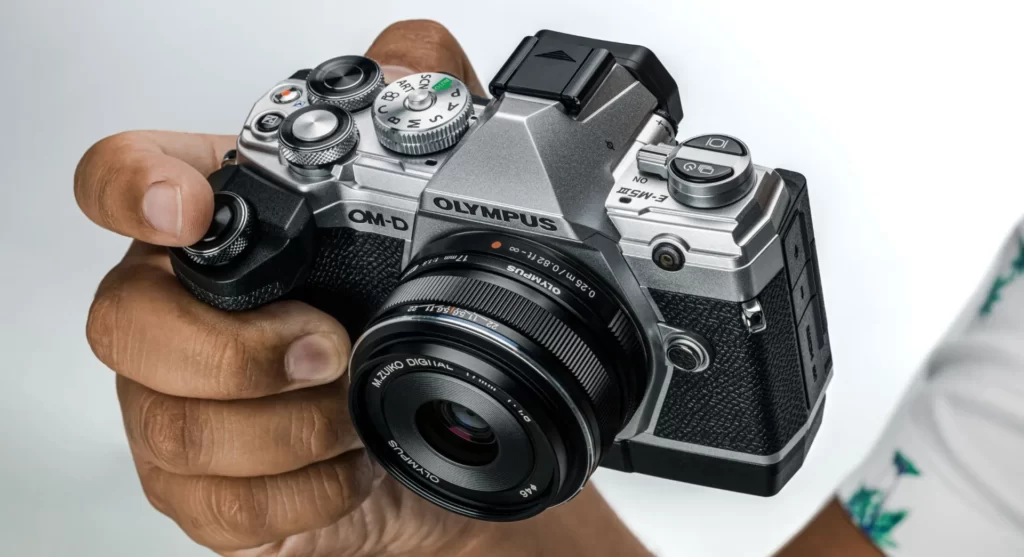
The Sony ZV-E10 and the Olympus OM-D E-M5 Mark III are two great options for photographers and videographers. While the Sony ZV-E10 has been specifically designed for vloggers, the Olympus OM-D E-M5 Mark III is a more general-purpose camera with a broader range of features. In this article, we will compare these two cameras in detail and highlight the strengths and weaknesses of each.
Sensor: Full Frame or APS-C
The Sony ZV-E10 has a 24.2-megapixel APS-C sensor, while the Olympus OM-D E-M5 Mark III has a 20.4-megapixel Four Thirds sensor. The APS-C sensor is larger than the Four Thirds sensor, which means that the Sony ZV-E10 can capture more light and produce higher-quality images, especially in low light conditions. My Sony ZV-E10, equipped with its 24.2-megapixel APS-C sensor, always stood out in low-light conditions. Its larger sensor size gives it this advantage. Yet
However, the Four Thirds sensor in the Olympus OM-D E-M5 Mark III has the advantage of being more compact, which makes the camera smaller and easier to carry around.
Autofocus
Both cameras have impressive autofocus systems, but the Sony ZV-E10 has the edge when it comes to tracking moving subjects. The Sony ZV-E10 features Real-time Eye AF and Real-time Tracking, which are specifically designed for capturing video. The Olympus OM-D E-M5 Mark III, on the other hand, has a very fast autofocus system that works well for both stills and video, but it does not have the same level of tracking performance as the Sony ZV-E10.
Speed
The Olympus OM-D E-M5 Mark III is faster than the Sony ZV-E10 when it comes to burst shooting. The Olympus can shoot at up to 10 frames per second with continuous autofocus, while the Sony can only shoot at up to 11 frames per second with no autofocus. However, the Sony ZV-E10 has the edge when it comes to video frame rates, with the ability to shoot at up to 120 frames per second at 1080p, while the Olympus can only shoot at up to 60 frames per second at 1080p.
Design: Dimension and Weight Comparison
The Sony ZV-E10 is slightly smaller and lighter than the Olympus OM-D E-M5 Mark III. The Sony ZV-E10 measures 115.2 x 64.2 x 44.8 mm and weighs 343g, while the Olympus OM-D E-M5 Mark III measures 125.3 x 85.2 x 49.7 mm and weighs 414g. Both cameras are compact and lightweight, making them easy to carry around for extended periods of time.
Viewfinder and LCD monitor
The Olympus E-M5 Mark III comes with a built-in electronic viewfinder with a resolution of 2.36 million dots, offering a bright and clear view of the scene. The viewfinder provides 100% coverage and a magnification of approximately 0.67x, making it easy to compose shots even in bright sunlight. The camera also features a 3-inch articulating touchscreen LCD monitor with a resolution of 1.04 million dots, which can be tilted and swiveled for easier framing and shooting at difficult angles.
The Sony ZV-E10 has a 3-inch articulating touchscreen LCD monitor with a resolution of 921,600 dots. The screen can be tilted to face forward for easy vlogging or self-portraits. However, the camera does not have a built-in viewfinder, so you have to rely on the LCD screen for framing and composition.
Battery life
The Olympus E-M5 Mark III is powered by a BLS-50 rechargeable lithium-ion battery that offers a battery life of up to 310 shots per charge. In contrast, the Sony ZV-E10 uses an NP-FW50 rechargeable lithium-ion battery that provides a battery life of approximately 440 shots per charge.
Video Capabilities
Both cameras offer impressive video capabilities, with the Sony ZV-E10 supporting UHD 4K video recording at up to 30fps and Full HD video recording at up to 120fps. The camera also offers 4:2:2 8-bit color depth via the HDMI output, making it a great option for videographers. The Olympus E-M5 Mark III supports DCI 4K video recording at up to 24fps and UHD 4K video recording at up to 30fps, with Full HD recording at up to 120fps. It also offers 4:2:2 8-bit color depth via the HDMI output.
Lens Mount and Availability
The Sony ZV-E10 features a Sony E-mount, which is compatible with a wide range of lenses from Sony and third-party manufacturers. However, the camera is designed primarily for vloggers and content creators and may not be suitable for professional photographers. The Olympus E-M5 Mark III uses a Micro Four Thirds mount, which offers access to a vast selection of high-quality lenses from Olympus, Panasonic, and other manufacturers. The MFT mount is popular among photographers and videographers, making it a great option for professionals and enthusiasts alike.
Price
The Sony ZV-E10 is priced at $800, making it a budget-friendly option for vloggers and content creators. The Olympus E-M5 Mark III is priced at $999, making it slightly more expensive than the Sony ZV-E10. However, the E-M5 Mark III offers a range of advanced features and impressive performance that justifies the higher price tag.
so there you go, this was our curated listed of cameras that are not just good alternatives to Sony ZV-E10 but excel in what they are made for, making you a good artist. Good Luck!
- Also Read- Dehancer vs Filmbox: Best Film Emulation Davinci Resolve
- Also Read- Top 5 Sony A6400 Alternatives In
- Also Read- Top 5 Sony Alpha 7 III Alternatives In




